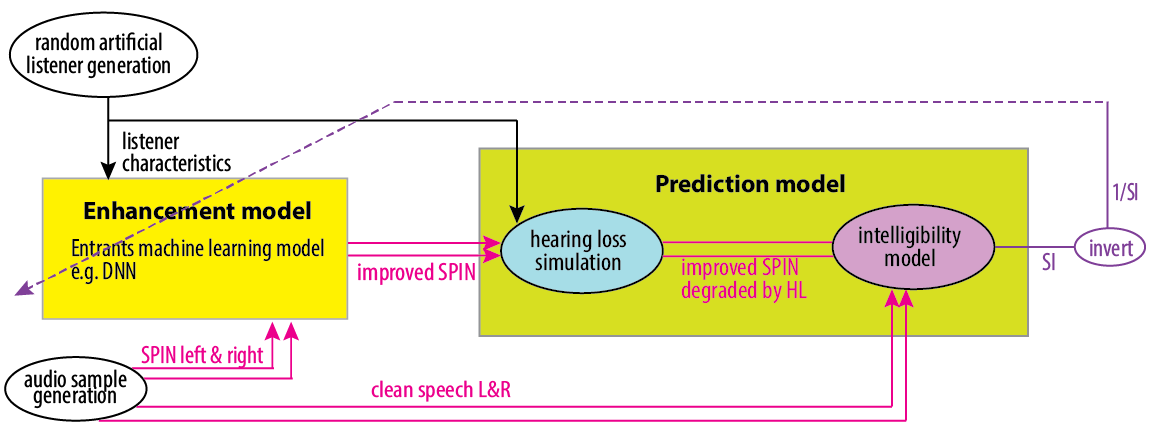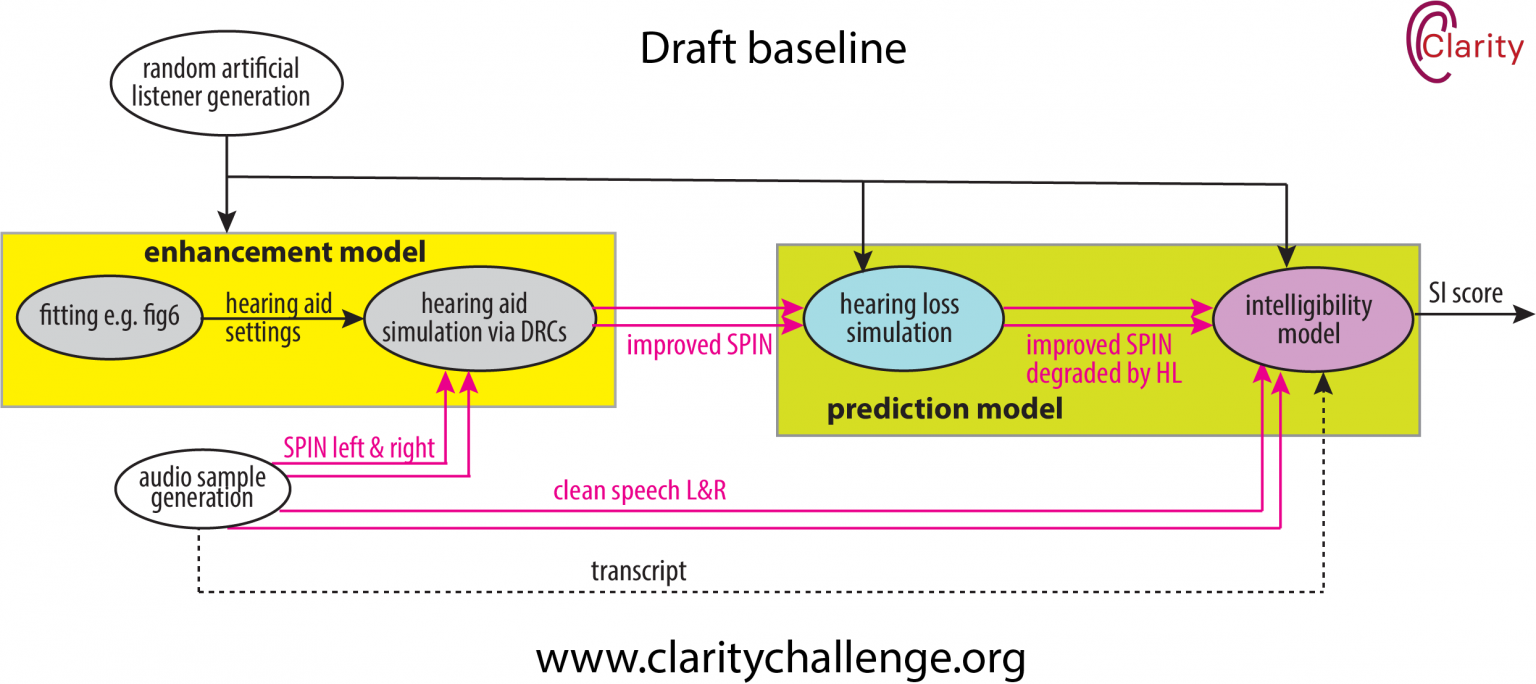Launch of CEC3
We are pleased to announce the launch of the 3rd Clarity Enhancement Challenge (CEC3).
The challenge follows on from the success of the 2nd Clarity Enhancement Challenge (CEC2) and is about improving the performance of hearing aids for speech-in-noise. The challenge extends CEC2 is three separate directions which have been presented as three different tasks.
- Task 1: Real ambisonic room impulse responses (🔥 LIVE 🔥)
- Task 2: Real hearing aid signals (🔥 LIVE 🔥)
- Task 3: Real dynamic backgrounds (launching 1st May)
Participants are welcome to submit to one or more tasks. We are particularly interested in systems that handle all three cases with little or no redesign/retraining.
The website has been fully updated to provide you with all the information you will need to participate. The necessary data and software are available for download.
The schedule for the challenge is as follows:
- 2nd April 2024: Launch of Task 1 and Task 2 with training and development data; initial tools.
- 1st May 2024: Launch of Task 3.
- 25th July 2024: Evaluation data released
- 2nd Sept 2024: 1st round submission for evaluation by objective measure
- 15th Sept 2024: 2nd round submission deadline for listening tests (Task 2 and 3)
- Sept-Nov 2024: Listening test evaluation period.
- Dec 2024: Results announced at a Clarity Challenge Workshop (Details TBD); prizes awarded.
If you have any questions please do not hesitate to contact us at claritychallengecontact@gmail.com. If you wish to be kept informed, please sign up to our Google group. If you are considering participating, please complete the registration form on the registration page. Registration is free and carries no obligation to participate, but will help us to keep you informed of any changes to the challenge.




